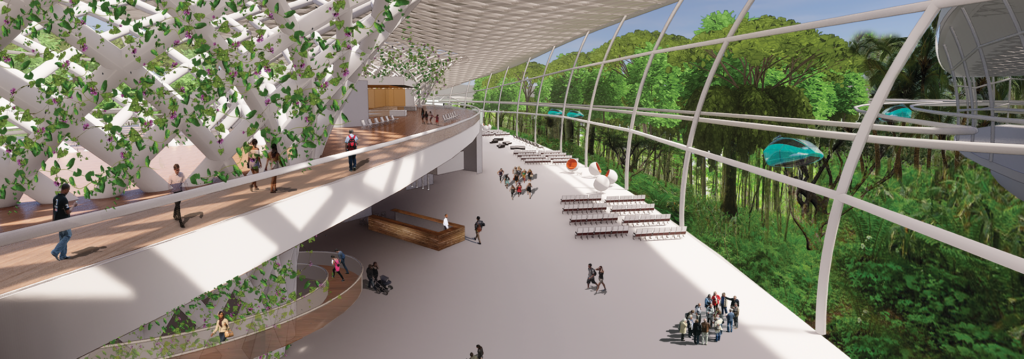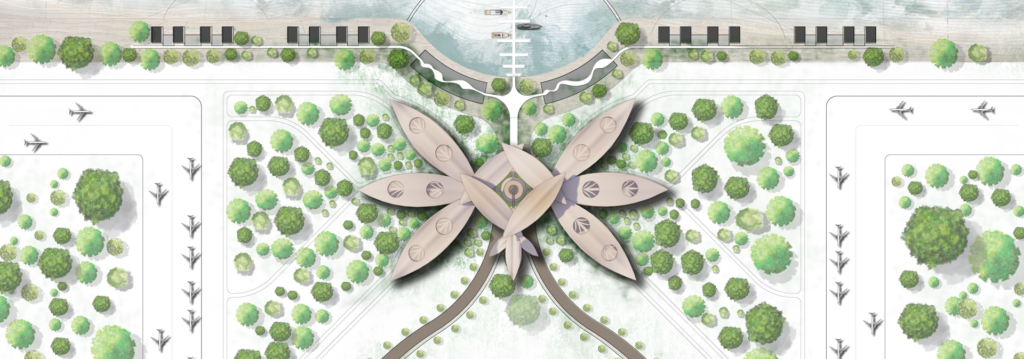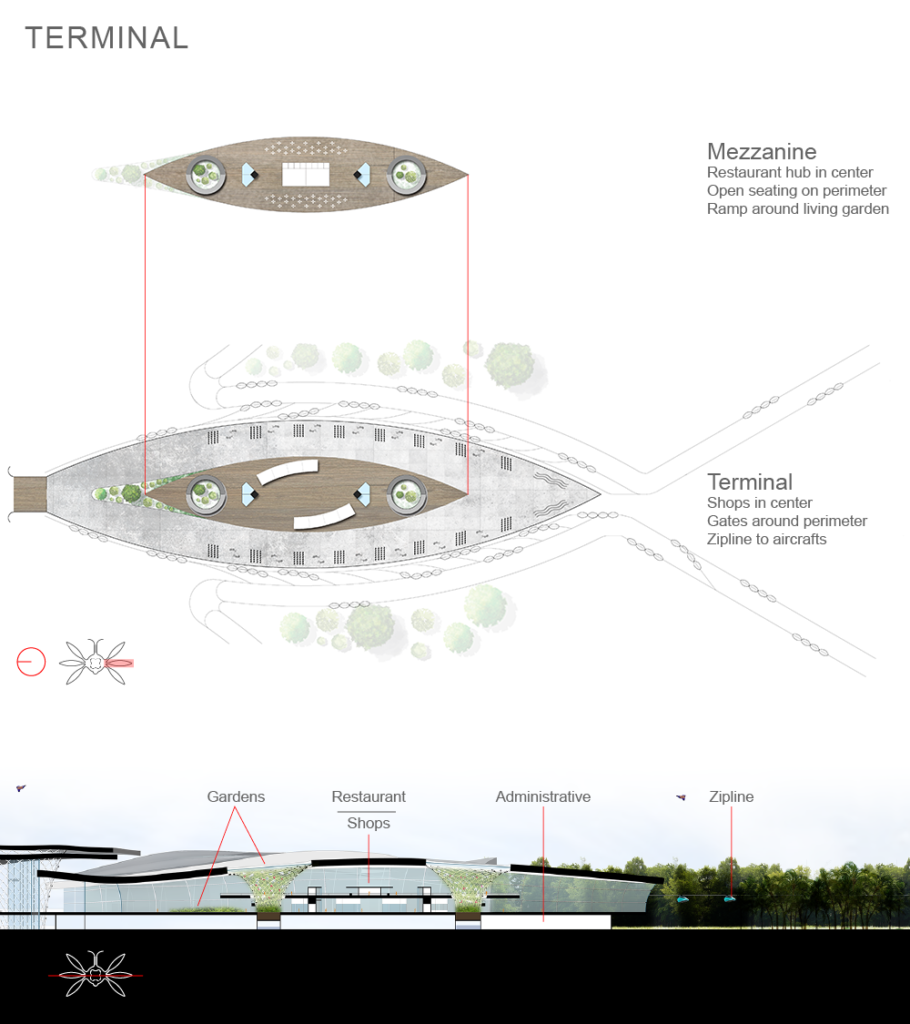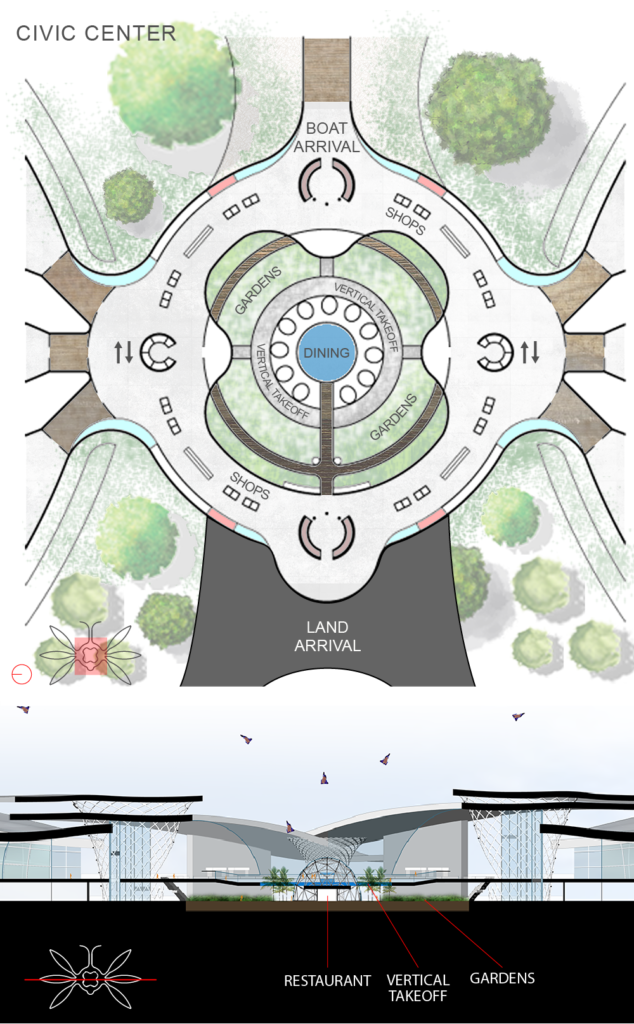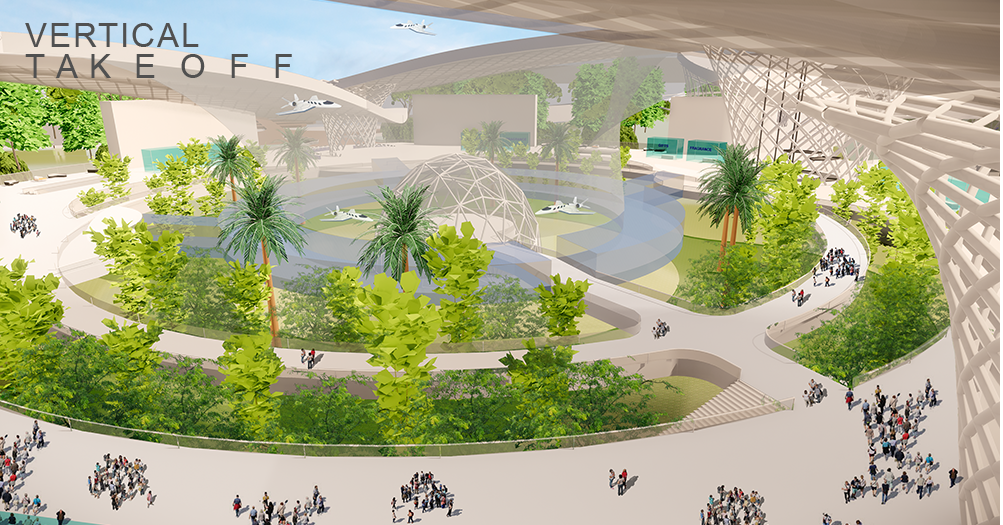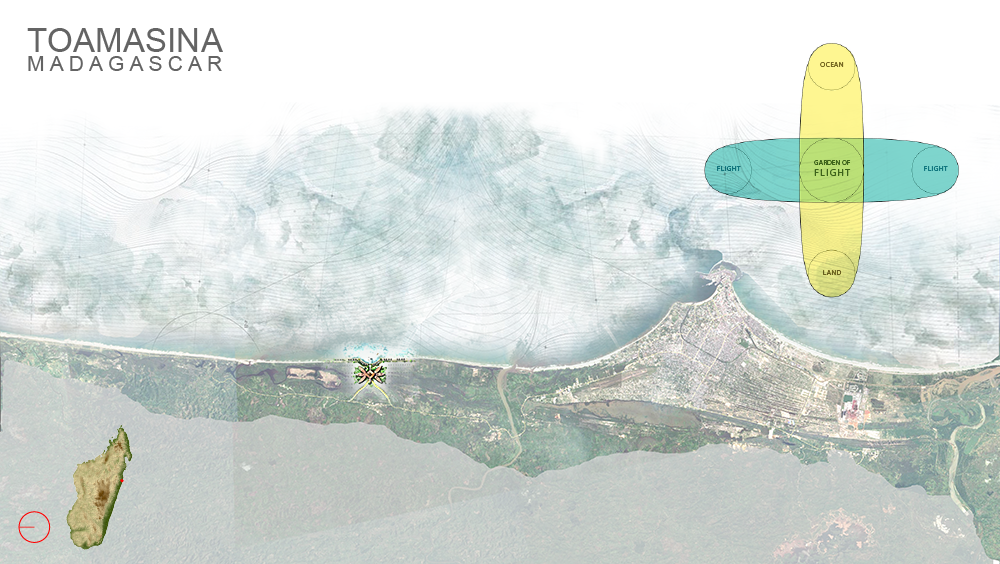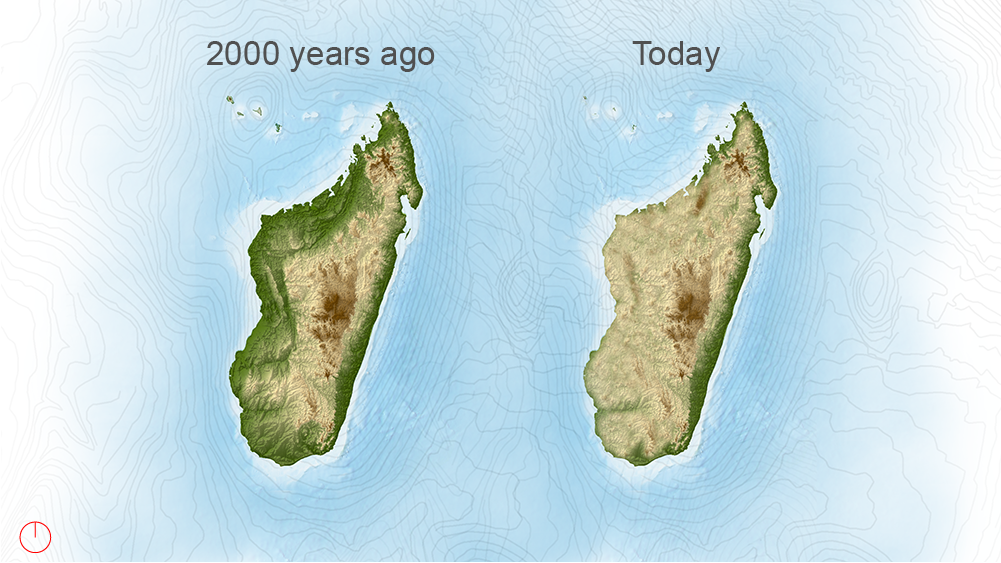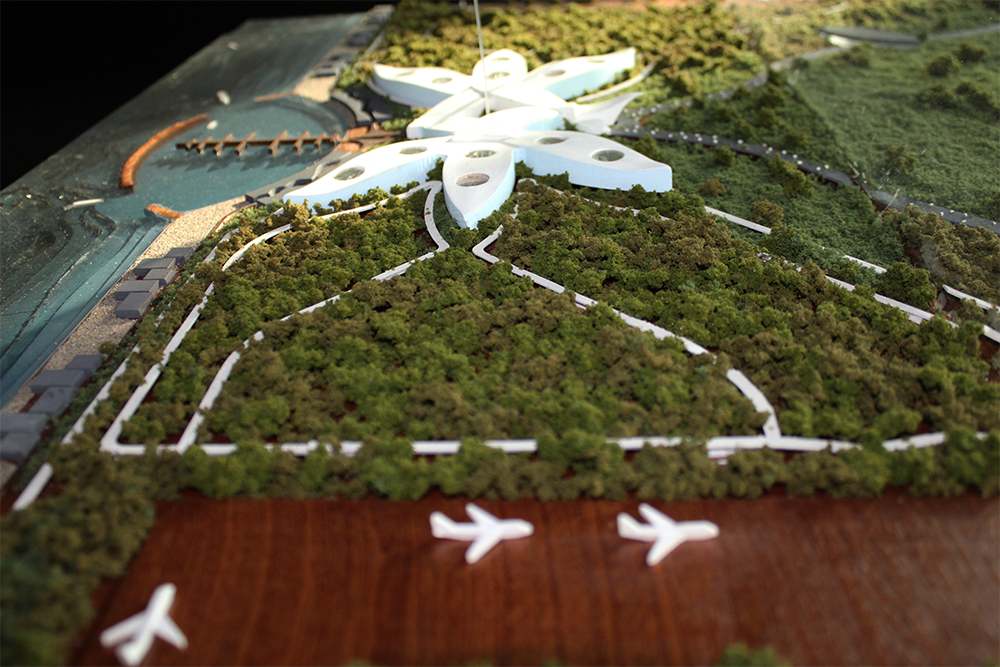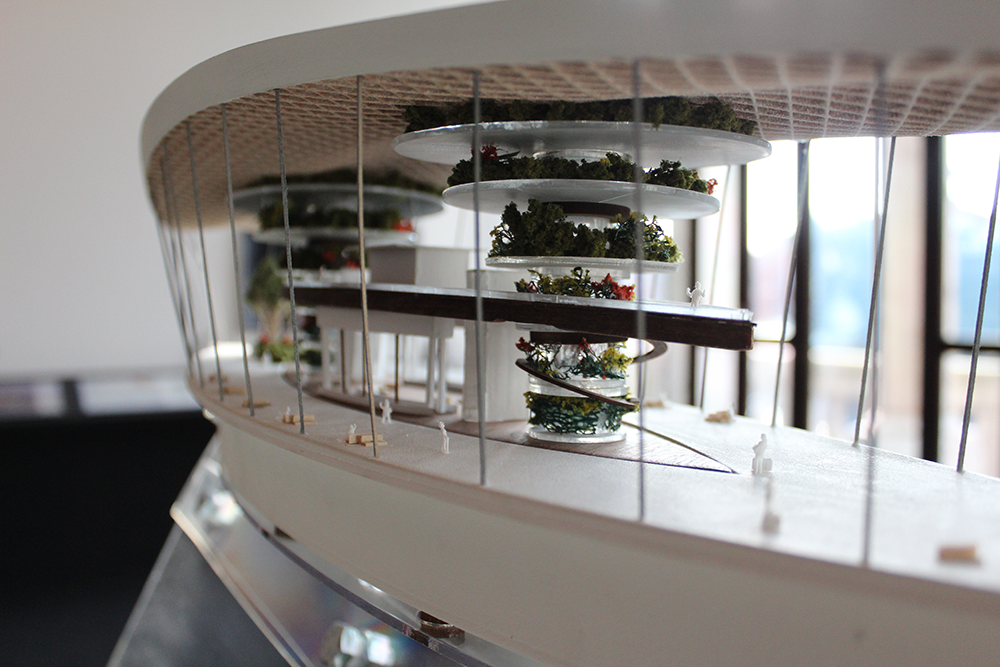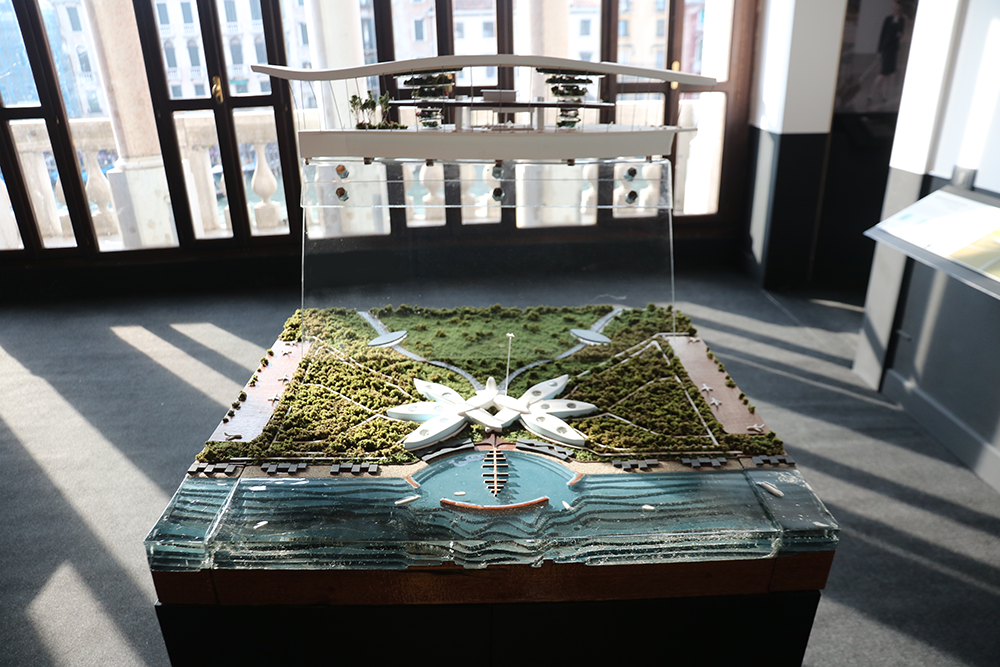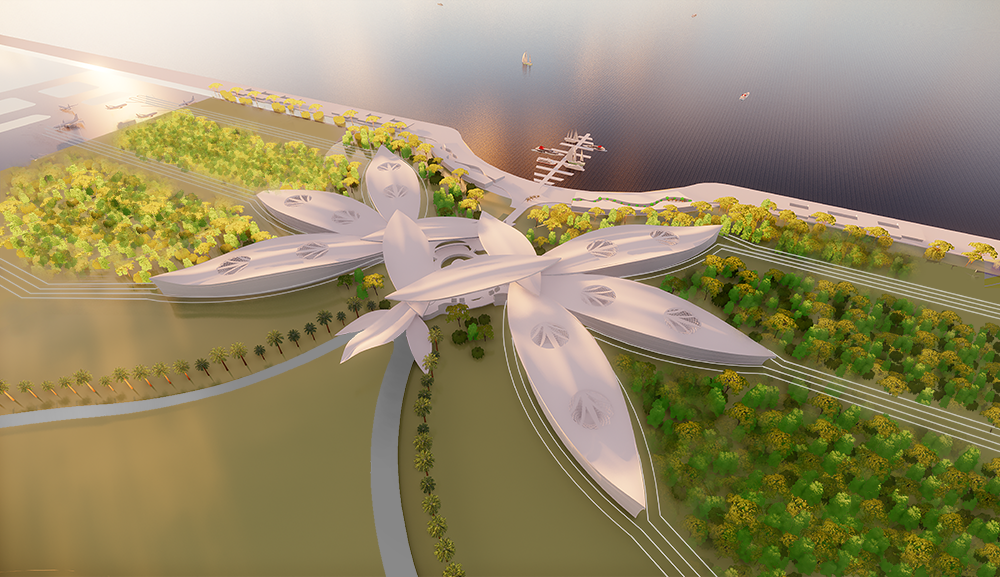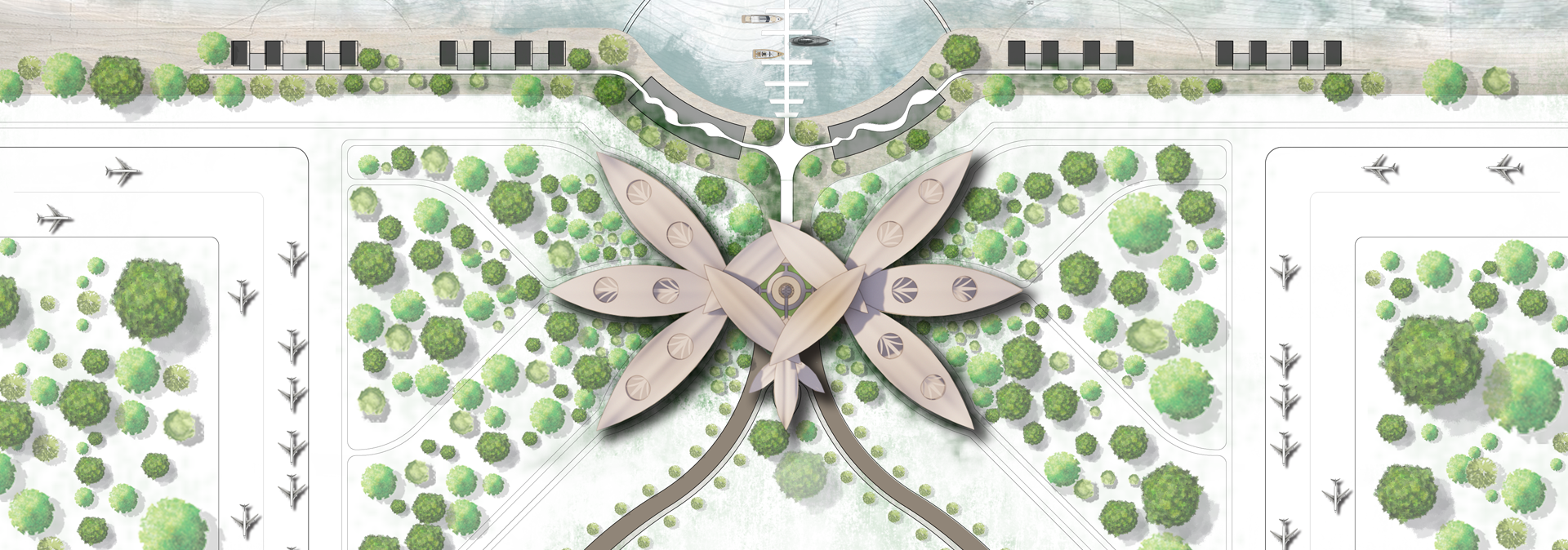
Airports of the Future: Toamasina, Madagascar
The island of Madagascar flaunts some of the world’s most unique and diverse ecosystems, with over 90% of the native plants and animals being found nowhere else in the world. It is home to the picturesque baobab tree, the famous traveler’s palm, and over one hundred species of Lemur. There is a menagerie of naturally-sculpted landscapes such as the Tsingy Mountains, the hundreds of beaches, and the lush rainforest. Unfortunately, the ecosystem is under attack and disappearing rapidly due to deforestation and the slash-and-burn agricultural practice.
The rich wildlife of Madagascar should be protected, preserved, and shared with the world. Our airport is designed to engage people through eco-tourism and create an immersive passenger experience. The Madagascar experience is based on the richness of its fauna and flora, as well as the diverse ecosystems, which are ingrained in the conceptual design of the Madagascar International Airport.
Development of Design
In only two thousand years most of the lush Madagascar rainforest has been destroyed, yet many people are in awe of the ecological wonders that the island contains. The Malagasy people are extremely self-sustainable, but pressures from the outside world encourage unsustainable practices. This led our team to design an airport of the future, a civic destination, that educates on sustainability through ecotourism.
Due to the difficulty of traveling across the island’s terrain by automobile, travel by boat and flight are very popular and inspired our design to offer multiple modes of transportation.
The airport is located along the eastern coast of Madagascar, in the city of Toamasina, creating a port, which not only celebrates the culture of the Malagasy people, but inspires the parti of the airport – one axis that celebrates the land and ocean and one axis that celebrates flight. Where these two axes intersect, the Garden of Flight blooms.
The concept of the airport is derived from the Travelers Palm, a plant native to the island. Lemurs, another native species, feed on the palm’s seeds, pollinating the plant and spreading its seeds throughout the island. This natural process inspired the form and function of the airport where the terminals are the seed pods and the ziplines are the seeds, transporting passengers through the rainforest to their flights.
The leaves of the Travelers Palm collect rainwater in the plant’s stems, ready to aid thirsty travelers. This inspired the idea to harvest rainwater in the terminal columns.
Final Project
Our team established three foci for the airport – The Passenger Experience, The Future of Flight, and Energy and Water Conservation.
To enhance the passenger experience we brought the island of Madagascar into the airport in a variety of ways. The core of the airport is a civic space. Passengers can experience the flora of Madagascar in the gardens filled with native plants, recreate on the beach, and buy goods and delicious foods from local merchants in shops, markets, and restaurants.
Terminals are lively and inviting with many activities to pass the time and views of the surrounding forest. Ziplines take passengers on a journey to their aircrafts, allowing them to fly through the rainforest with the birds of paradise. The movement of passengers via ziplines decreases boarding time while improving the passenger experience.
Flight technology has developed rapidly over the last century and will progress even faster in the future. With this in mind, the Madagascar International Airport implemented aircrafts with vertical takeoff capabilities. The future of flight is celebrated with a restaurant and viewing platform where visitors can engage in the hustle and bustle of global travel.
Energy and water will become even more scarce in the near future, so the Madagascar International Airport incorporates sustainable features such as natural ventilation in the civic space, water collection and purification in the terminals, and daylighting throughout to help minimize the demand for energy and water. These features help educate locals and visitors alike on the importance of conservation.
Project Images
About the Team
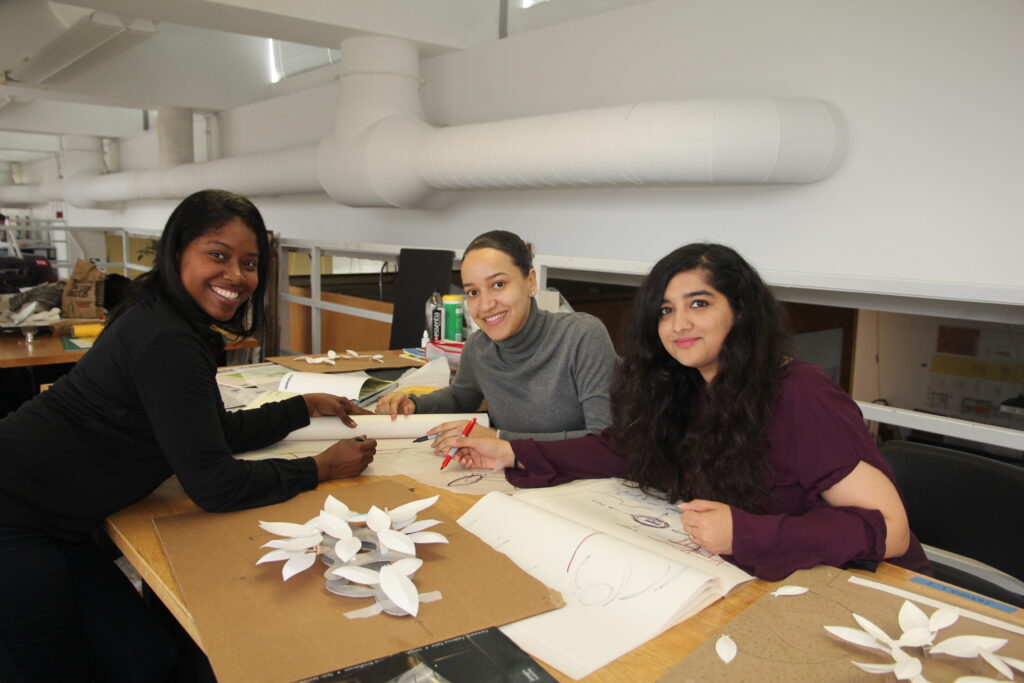
Arpitha Belur (Right)
M.Arch May 2018
As an architect and world traveler, when I step into any space it is important for me to feel good. Every element matters, so my strength lies in the details. I am currently practicing at Fentress Architects.
Sheyda I. Livingston Izquierdo (Center)
M.Arch May 2020
I am currently completing an internship through the iPAL program at Schenkel Schultz in Orlando, FL.
Rosa McDonald (Left)
M.Arch May 2019
My design foci includes energy, technology, and sustainable practices that positively impact communities. Research is essential to making informed decisions and I am exploring how technology can assist with that. I am currently an intern at Gensler.
